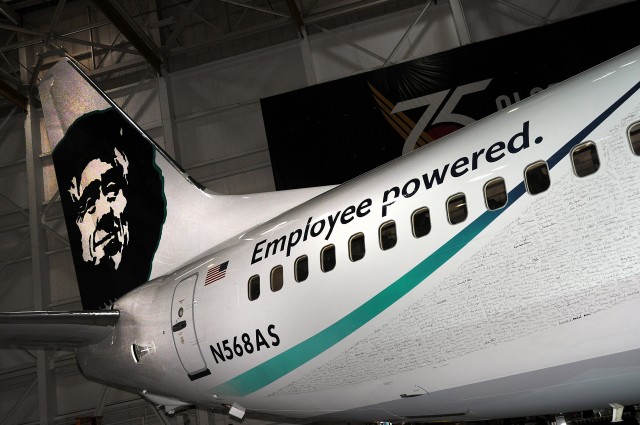
Check out that sparkle on the tail – Photo: Alaska Airlines
Earlier this month, an Alaska Airlines Boeing 737-800 (N568AS) showed up at Paine Field with a special livery. Although the photos showed that the airline was up to something, it wasn’t obvious how cool this special livery was going to turn out.
It is more than just about looks – it’s really about celebrating those who work for the airline. Not only does the livery sport a very sparkling tail, but also the signatures of more than 8,500 employees.
’œLook closely and you will see the words ’œEmployee Powered’ by the L1 door,’ said Ben Minicucci, executive vice president of operations and chief operating officer during the aircraft’s debut. ’œThis aircraft is dedicated to you as a thank you for all you have done for this airline.’
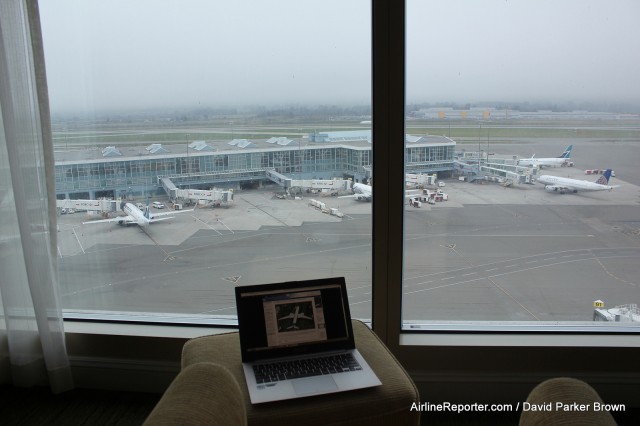
Reading a fun website while looking out the hotel room is awesome.
There are hotels and then there are AvGeek hotels. The Fairmont Vancouver Airport Hotel is surely an AvGeek’s hotel, but can still be enjoyed by those who are more practically-minded. The hotel is located inside Vancouver International Airport (YVR), which makes it convenient for people who are flying. There is no need to find a shuttle and you can sleep in until just before your flight, roll out of bed, and either start or continue your journey.
But for many who enjoy aviation, these rare hotels provide something a little bit more: sleeping and relaxing while airline spotting. Heck, it is a thrill to stay at an airport like this, even if you are not flying anywhere. Recently, that is just what Malcolm and I did to check it out, and we wanted to share what we found.
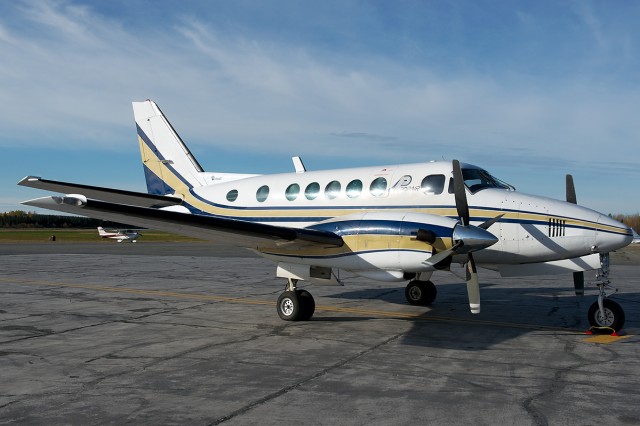
A Propair Beech King Air A100 – Photo: Bernie Leighton | AirlineReporter.com
This is a continuation of Day of the Turbine (Part 1): Flying on the Convair 580…
Realistically, Beech knew the 18 was in need of replacement. Though the 18 was produced until 1972, by the mid 1960’s there were thousands upon thousands of light utility, cargo, and twin-engine training aircraft that needed replacement. There was no reason for Beech to forfeit that market.
At the same time, Beech had become successful in the recreational and corporate aviation avenue. Executives who used their salary to buy smaller single-engine Beeches would often buy larger twins, such as the Baron, for their companies. With turboprops becoming popular around the same time and the demand for executive travel growing, Beech needed both a larger Baron and an 18 replacement, in one frame.
The first King Air was almost exactly that – a stretched Baron with Pratt & Whitney Canada PT6A engines. In some ways, the original King Air is reminiscent of a Pacific Airmotive Tradewind with turbine engines. Not many ways other than cosmetic, yes- but it counts!
Propair, operator of the 1972 Beech King Air A100 I would fly on (C-FWRM), is based in Rouyn-Naranda. They fly medevacs, mining charters, and any sort of charter aviation task one would need in rural northern Quebec, up to and including Nunavik. They also operate a Gulfstream I, which we were supposed to fly on, but it went tech a little over a week before our flying day, and was be replaced with an aircraft to be discussed in part three.
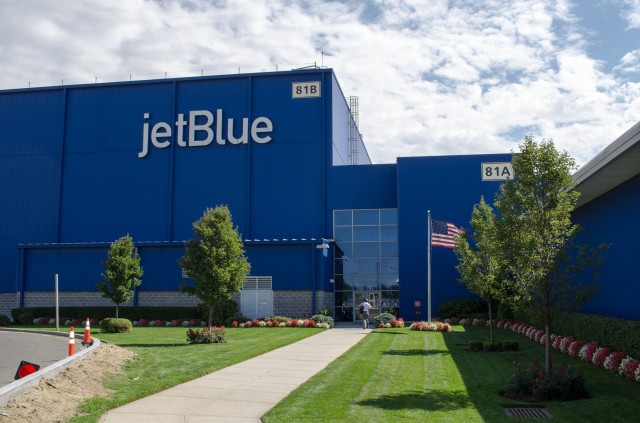
The JetBlue maintenance hangar at JFK airport – Photo: Jason Rabinowitz
In 2005, a giant blue building appeared in the middle of John F. Kennedy International Airport (JFK) in Queens. JetBlue, still growing larger and larger at the time, decided it was time to have a place of their own, at their home airport, to do some aircraft maintenance. The 140,000-square-foot hangar and maintenance (MX) facility, or “Technical Operations Center” (simply called “Hangar 81” by employees), finally provided JetBlue with a proper facility for on-site offices, part storage, and light maintenance.
The hangar was actually opened before JetBlue took delivery of their first Embraer E190, and long before the Airbus A321 was even in the cards. Over the years, the hangar has been adapted to accommodate such aircraft without a hitch, and what goes on behind the scenes is pretty amazing. Last month, Timothy Russo, JetBlue manager of MX and Material Planning, Technical Operations, walked me around the sprawling facility, which might actually be better compared to a maze than an office.
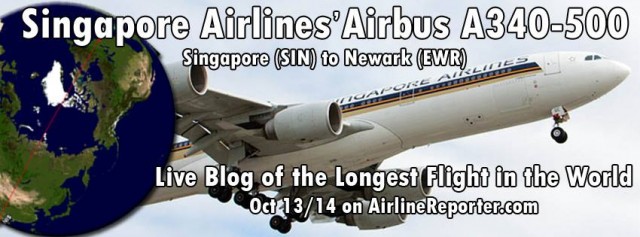
Heading out soon.
It is almost that time to board a Singapore Airlines Airbus A340-500 and be a part of the world’s longest flight. Okay, well I still have a few hours left. Before then, I will be checking out of my hotel, getting a short tour of the airport, probably relax in the lounge for a minute or two and then find my seat for the next 18 hours or so. I will be departing on SQ 22, which leaves about 10:55am local time [which is 7:55pm 10/13 in Seattle or 2:55am 10/30 GMT].
You can follow along the flight on FlightAware and hopefully on this blog. Here is the catch though; due to the flight plan there is a good chance that I won’t be able to access the internet the whole time and when I do, it could be slow. Have no fear though, if I cannot connect up, I will write the story as a live blog on my local laptop and be sure to update when I have a chance. Worst case, that means after I get settled into my hotel after arriving at Newark (aka worst case scenario).
Since I will be crossing about half the existing time zones (and the international date line), I plan to update based on time spent on the aircraft. Once I enter the cabin, I will start a timer and update the post based on the elapsed time. I am hoping to stay awake the whole time, but know that I might need a little nap. Also realize that on a flight this long, there might not be too much happening between, “oh starting this movie,” and “done with the movie,” so my silence might not mean I cannot connect to the internet, but because I am doing something boring. Well, nothing is boring while on this flight, but I don’t want to give away plot lines of a movie.
With live blogging and possibly having a Singapore Sling or two, I realize that the grammar might not be 100%. No worries, it will all be worked out as the flight progresses or afterwards, so try to have a little more flexibility for the short-term and we shall do just fine. Well, I think that just about lays the ground work for how this shin-dig will work out. Hopefully you will be hearing from me soon and if not, know that I am enjoying the flight and looking forward to sharing soon.




